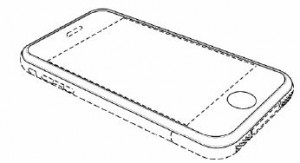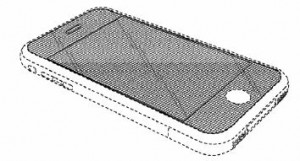Apple, Inc. v. Samsung Elecs. Co.: Permanent Injunction Unlikely
Back in July of 2012, a jury returned a powerful verdict against Samsung, in a suit filed by Apple (AAPL), claiming Samsung infringed on several patents, and diluted Apple’s trade dress for the iPhone. That jury found that 26 Samsung smartphones and tablets infringed Apple patents and that six Samsung smartphones diluted Apple’s registered iPhone trade dress and unregistered iPhone 3G trade dress. Although Samsung had asserted claims of its own, that jury rejected Samsung’s infringement counterclaims and awarded Apple more than $1 billion.
The twenty-six products found to infringe Apple’s patents include Samsung’s Captivate, Continuum, Droid Charge, Epic 4G, Exhibit 4G, Fascinate, Galaxy Ace, Galaxy Prevail, Galaxy S, Galaxy S 4G, Galaxy S II (AT&T), Galaxy S II (i9000), Galaxy Tab, Galaxy Tab 10.1 (Wi-fi), Gem, Indulge, Infuse, Mesmerize, Nexus S 4G, Replenish, Vibrant, Galaxy S II (T-Mobile), Transform, Galaxy S Showcase, Galaxy S II (Epic 4G Touch), and Galaxy S II (Skyrocket).
The district court set aside a portion of the damages award for certain products and scheduled a partial new trial on damages, but affirmed the jury’s liability findings. Apple however, was not satisfied and requested a permanent injunction, which was denied. An appeal ensued, and an opinion was just recently issued.
Because the issue on appeal was the permanent injunction, the court did not look at the infringement issue, as it was already established. However, to review the issues presented on a permanent injunction analysis, the court nonetheless reviewed the patents involved. The following figures from the design patents are illustrative of the designs involved in this litigation:


According to the court’s previous opinion in Apple Inc. v. Samsung Electronics Co., 678 F.3d 1314 (Fed. Cir. 2012) (Apple I), some of Apple’s patents covered “a minimalist design for a rectangular smartphone consisting of a large rectangular display occupying most of the phone’s front face. The corners of the phone are rounded. Aside from a rectangular speaker slot above the display and a circular button below the display claimed in several figures of the patent, the design contains no ornamentation.”
Under well-established case law, particularly eBay Inc. v. MercExchange, L.L.C., 547 U.S. 388, 391 (2006), which the court cited, Apple needed to establish the following factors in its favor: 1) that Apple had suffered an irreparable injury; (2) that remedies available at law, such as monetary damages, were inadequate to compensate for its injury; (3) that, considering the balance of hardships between the Apple and Samsung, a remedy such as a permanent injunction is warranted; and (4) that the public interest would not be disserved by the permanent injunction.
In analyzing the permanent injunction issues, the court noted a previous decision that established “[i]f a less drastic remedy . . . [is] sufficient to redress [a plaintiff’s] injury, no recourse to the additional and extraordinary relief of an injunction [is] warranted.” Citing Weinberger v. Romero-Barcelo, 456 U.S. 305, 311-12 (1982).
Hence, with respect to the design patents and trade dress, the court noted that there was ample evidence that the products in issue are no longer sold and there was no evidence that Samsung might resume selling them so that the district court was within its discretion to deny an injunction based on all allegations of trade dress dilution.
With respect to the utility patents involved however, the court noted that the lower court made an error in its analysis. The Federal Circuit explained that the ability to pay damages does not make money damages adequate even though it is true that an inability to pay damages may be indicative that money damages are inadequate. The Federal Circuit court held that the lower court must consider all relevant information “to determine whether a damages award will adequately compensate the patentee for the harm caused by continuing infringement.”
Thus, the Federal Circuit found error in the district court’s equating Samsung’s ability to pay monetary damages with an absence of irreparable harm.
Ultimately, the Federal Circuit affirmed the denial of injunctive relief with respect to Apple’s design patents and trade dress, but vacated the denial of injunctive relief with respect to Apple’s utility patents and remanded for further proceedings.
So, although it is unlikely Apple will prevail in seeking a permanent injunction, it looks like this battle remains to be continued… here is the opinion.
Saul Acherman
Attorney at
JAFARI LAW GROUP®, INC.

